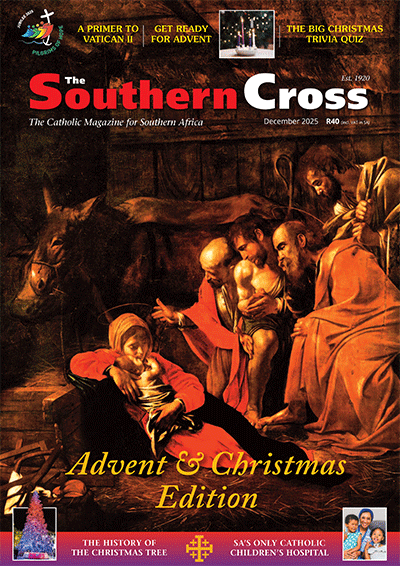St Scholastica: The Twin Sister of St Benedict

Born: c.480 in Nursia (today Norcia), Umbria, Italy
Died: February 10, 543, near Monte Cassino, Italy
Feast: February 10
Attributes: Nun with crozier and crucifix; nun with dove flying from her mouth
Patronages: Schools; tests; books; reading; convulsive children; storms and rain; nuns, Benedictine women’s communities.
On February 10, we mark the feast of St Scholastica, a pioneering nun who was the sister, possibly the twin, of St Benedict, the “father of monasticism” in Western Europe.
The siblings were born around 480 to a Roman noble family in Nursia (now Norcia, in the central Italian province of Umbria). Their parents, Anicius Eupro-pius and Claudia Abondantia Reguardati, were wealthy, but both Benedict and Scholastica sought pious lives of poverty and discipline.
Scholastica seems to have devoted herself to God from her earliest youth, as the account of Benedict’s life by Pope Gregory the Great (who lived from 540-604) mentions that his sister was “dedicated from her infancy to Our Lord”.
The twins’ mother died at their birth. When Benedict was old enough, he left home to study in Rome, leaving Scholastica with her father to tend the Nursian estate. In time, Benedict left his studies to live first as a hermit, and then as the head of a community of monks of what would become the Benedictine Order.
When Scholastica learned of her brother’s total dedication to the Lord, she was determined to follow his example. It is not certain that she became a nun immediately, but it is generally supposed that she lived for some time in a community of pious virgins. Some biographers believe she eventually founded a monastery of nuns in the town of Plombariola, near Benedict’s monastery on Monte Cassino, about 140km south-east of Rome.
The brother and sister communities were about 8km apart. St Benedict seems to have directed his sister and her nuns, most likely in the practice of the same Benedictine Rule by which his own monks lived. Unlike her brother, St Scholastica was never the subject of a formal biography. As such, little is known of her life, apart from her commitment to religious life which paralleled that of her brother.
Can Pope Gregory’s account of her life be trusted? Well, he was a near contemporary and interviewed four Benedictines who probably knew Benedict and possibly Scholastica, too. Early calendars and place names in the area around Monte Cassino support the historical accuracy of his account.

Left: The spot of the birth of St Scholastica and St Benedict in the crypt of the basilica in Norcia that was flattened in the 2016 earthquake. Photo: Günther Simmermacher. Centre: St Benedict and St Scholastica are depicted in a fresco on the ceiling of the cloister church of Elchingen, Germany. Right: A statue of St Scholastica in the church in Norcia that marked her and St Benedict’s birthplace. The church was destroyed in a 2016 earthquake. Photo: Günther Simmermacher.
The final meeting
Pope Gregory wrote that Scholastica used to meet with Benedict once a year, at a house located halfway between the two communities, since she could not enter her brother’s monastery. For the sake of propriety, Benedict would be accompanied by a delegation of monks from his community.
St Benedict’s biographer recounted a story which is frequently told about the last such visit between the siblings in the year 543. They passed the time as usual in prayer and pious conversation. After supper, as the encounter neared its end, Scholastica begged her brother to stay for the night, but he refused, because his own Rule didn’t allow him to spend a night outside the monastery.
She then joined her hands together, laid them on the table, and bowed her head upon them in supplication to God. Immediately as she lifted her head from the table, a storm arose. It was so fierce that Benedict could not leave.
“Seeing that he could not return to his abbey because of such thunder and lightning and great abundance of rain,” Pope Gregory wrote, “the man of God became sad and began to complain to his sister, saying, ‘God forgive you, what have you done?’”
Scholastica answered: “I wanted you to stay, and you wouldn’t listen. I have asked our good Lord, and he graciously granted my request, so if you can still depart, in God’s name return to your monastery, and leave me here alone.” St Benedict had no choice but to stay and speak to his sister all night long about spiritual matters — including the kingdom of heaven for which she would soon depart. For reasons of that story, St Scholastica is invoked against storms and rain (also see page 20).
Three days later, Benedict had a vision of the soul of his sister, departed from her body and, in the likeness of a dove, ascending into heaven. He rejoiced with hymns and praise, giving thanks to God. His monks brought her body to his monastery and buried it in the grave that he had provided for himself.
St Benedict followed her four or five years later, and was buried in the same grave with his sister.
- Book of Selected Works by Fr Albert Nolan Released - November 26, 2025
- Recovery and Victory Seminar at Mater Dei Pastoral Centre - November 22, 2025
- Invest in Community: CATHCA’s Urgent Call ahead of Global Fund Summit - November 20, 2025




